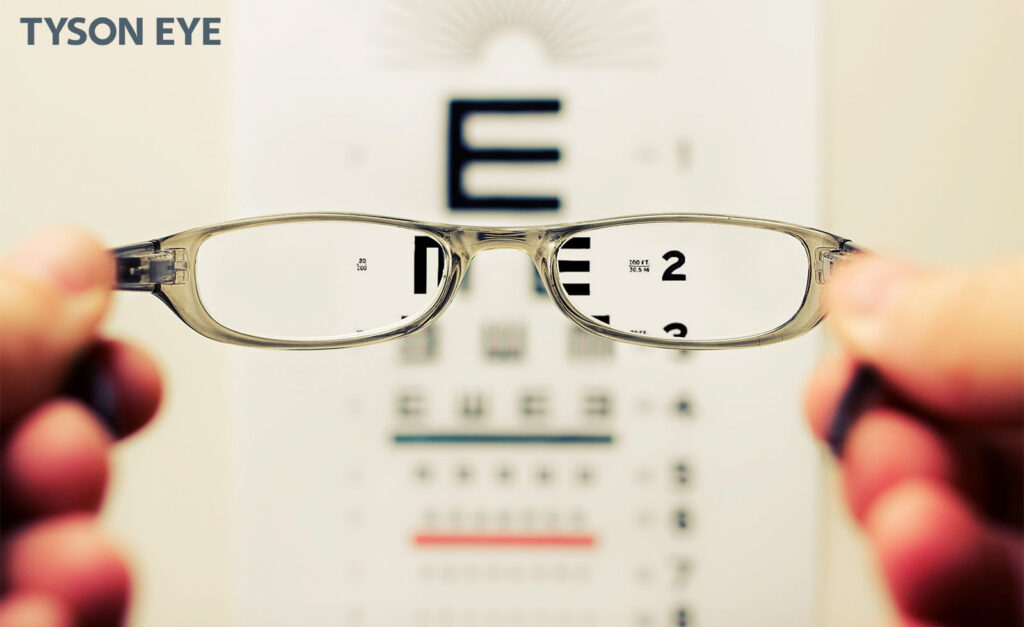During your last routine eye exam your eye doctor may have diagnosed you with a common eye condition, either nearsightedness or farsightedness, but perhaps you aren’t sure exactly what those terms mean, or what causes them. With perfect vision, you should be able to see clearly up close and far away, but if you have nearsightedness or farsightedness those abilities are affected. Let’s breakdown the differences of these two eye conditions.
Farsightedness
Farsightedness, also known as hyperopia, means that you can see items in the distance clearly, or in other words your far sight is good. With this condition you may have difficulty reading or seeing things close up. Your near vision may be blurry. Farsightedness is a refractive issue caused by the cornea being too flat, or the eyeball being too short. This causes light to focus at a point beyond the retina, making close vision blurry. Farsightedness often isn’t diagnosed until a patient is older as younger eyes can often compensate for this issue.
Nearsightedness
Nearsightedness, also known as myopia, is the opposite of farsightedness, meaning that you can see close items better, but your distance vision or far sight is blurred. You may notice for example that it’s hard to read road signs that are far away when you are driving. This condition is caused when there is too much curvature to the cornea or the eyeball is too long, so the light rays focusing on distant items converge before they reach your retina. This condition is usually hereditary, may be diagnosed in childhood, and tends to worsen with age.
How Are Farsightedness or Nearsightedness Diagnosed?
Both farsightedness and nearsightedness can be diagnosed during a regular eye exam with a refraction test. During this test, the eye doctor will assess how light bends as it moves through the cornea and lens. This can be done by simply shining a light in your eyes or using a machine that measures your refractive score.
During a vision test, you will read from a chart comprised of bold black letters that are larger at the top and get progressively smaller towards the bottom. You’ll then look through a device called a Phoroptor, one eye at a time, while the doctor changes the lenses back and forth as you try to read the chart.
The technician typically asks the patient, “Which looks better – One or two? Two or three?” to determine which lens is best for each eye. Whatever correction works best for you determines whether your near or far vision is in the most need of correction.
How Are Farsightedness or Nearsightedness Treated?
These common eye conditions can be treated through corrective lenses, either through prescription eyeglasses or contacts, which are used to correct farsightedness or nearsightedness and helps to give you clear vision. Talk to your doctor about the options that might be right for you.
Come See Us
If you are having any problems with your vision, schedule an appointment with us right away.
Tyson Eye is regarded as one of the premier eye care centers in Southwest Florida. Our surgeons and doctors have helped thousands of people enjoy better vision and have consistently introduced break-through technology to the area. Tyson Eye is committed to excellence by delivering modern technology with old fashioned concern. Contact us for a free consultation today or call 239-542-2020.
